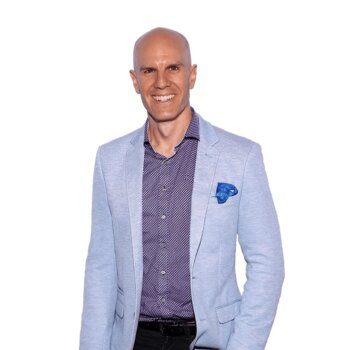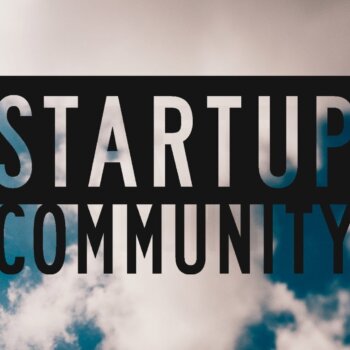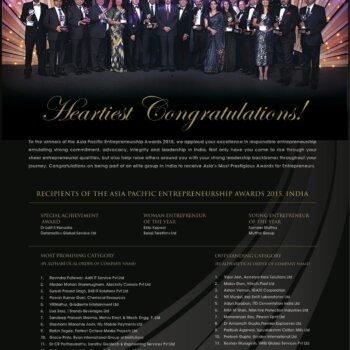(This is one in a series of articles and interviews about conscious business leadership, which is about leaders creating and promoting workplaces of understanding, honesty, and compassion, for the betterment of their employees, their community, their organization and world.)
How do you use crowdsourcing to solve world problems? MIT has found a way.
Here, I speak to Alex Amouyel, Executive Director of SOLVE during the Em Tech Conference held in Singapore recently.
What is SOLVE? How is it different from other crowdsourcing platforms or non-profits in this same space?
Solve is several things: First, it is a community of private, public, non-profit, and academic leaders working together to solve world challenges.
It’s also a marketplace connecting and encouraging innovators to submit their solutions to our platform, where they have the chance to be selected by our judges.
Then, those innovators are connected with our community of business leaders, foundations, governments and academics, who have resources to help to make their solutions a reality. Our mission is to solve specific, actionable challenges– and at the moment we have four of these in the following pillar areas: refugee education, carbon contributions, chronic diseases, and inclusive innovation.
For our first round of challenges, we had 386 solutions submitted from 57 countries, including Singapore and other Asian countries. 43 of those were invited as finalists to Solve at the United Nations on March 7th, our live pitch event where our selected finalists pitch their solution in 3 minutes tell us why we should select them to become Solvers that the Solve community will then support and nurture.
We are redesigning the online platform, but it is currently solvecolab.mit.edu. This is where people can submit their solutions to the particular challenges we launch each year.
This seems to be, obviously, a very large skills collaborative project. What have you seen so far to be an indicator of success?
This is the first round of challenges, so we’ll have to wait a bit longer to see quantifiably demonstrated impacts. However, the partnerships we’ve already built are evidence of our early successes. We already have multiple sectors and multiple actors collaborating to solve very difficult global challenges, and we’re excited to see the results.
A key ingredient to success is open innovation– and that’s what we are doing at Solve. Nationally and across the world, we are currently not utilizing the talent and skills of people everywhere to solve global challenges. At Solve, we can use the good ideas of people in communities across the world and connect them with the resources they need to fully realize solutions to global challenges. We want to uncover and solve some of these challenges faster. There are already a lot of technologies that can positively impact particular communities, but many of those technologies are not affordable, deployable to the right targets, or distributed well.
At Solve, we are finding a way to take a great idea that is in, say, Singapore– or a great idea in Kenya– and deploy that elsewhere in the world. That can have a tangible, positive impact.
One of the best examples being used now is M-Pesa, a mobile money platform that was pioneered in Kenya. 75% of adults use M-Pesa – it is the main means of communication. The idea behind M-Pesa was to take two technologies that are currently in existence–fixed line telephones and bank accounts–but which are not currently available to the right people. Solve’s model is similar: While some of the solutions we are working with might be new technology, often they involve technology that already exists but isn’t scaled, resourced, or deployed to the right people in the right way.
How does SOLVE plan to be not so “agenda-ed”? When you start being like the United Nations or a government, there are sometimes political business agendas. How have you managed to be not so agenda-ed thus far, so that everyone has an equal voice in the receiving of funds or support?
Being an initiative of MIT, the Massachusetts Institute of Technology really helps. It’s a very well-respected, cutting edge research academic institution, which is not seen as having a political agenda. It’s a non-profit and its mission is to advance knowledge and its applications. MIT has a huge convening power of expertise that we utilize to ensure we select Solve solutions from a pool of diverse judges. At the moment, we have 10 judges per challenge who are a mix of MIT faculty and other academic industry leaders from different businesses and NGO leaders, and beyond.
Do you intentionally go to look for innovations in the field?
It’s a challenge. In the area of development, we have 57 countries represented, but we know that’s not enough. We would like to get all 196 countries represented. For the Refugee Education challenge, we like to source solutions from refugees themselves, or from teachers in refugee camps. That way we encourage people from around the world to really submit solutions from different nationalities, social and academic classes, and genders.
If a person in your Solve campaign is successful, what does that look like? What could be the difference to me, to them, or to the world?
We initially ran a pilot project where we selected four people as Solvers. On example is Katie Zani. Originally an American, she currently lives in Bulgaria and volunteers in a Bulgarian refugee camp. She is not a certified teacher, but she wants to build a platform that connects volunteer teachers in refugee camps to qualified teachers in the US, or Singapore, or anywhere in the world. What’s nice about her model is that the technology is not that complicated.
Refugee camps face barriers, such internet connectivity and access. The teaching volunteers usually need ideas for lesson plans for particular subjects and topics, which qualified teachers already have. In Bulgaria, there are a lot of refugees, and what Katie needs is funding. But what is more important, and what she is hoping to get, is a technology company or consultancy to build a prototype platform for her, free of charge. That’s where Solve jumps in. We have introduced her to a number of engineers who have agreed to help distribute the platform. We have also connected her to teacher associations in the US.
We are matchmakers. We would love to be connected to more NGOs who are helping in refugee camps and introduce Katie to these people. So we are working on being connectors, accelerators, and brokers.
The goal outcome for us is that the education platform gets implemented, that volunteer teachers get better resources, and that refugee children have better learning outcomes and quality education. We ratify a partnership and people like Katie can say “Great, I have tools to make this happen.” Then she works to implement her solution and we get to help tell the world about her success.
Where does funding come from for Solvers? From MIT or from partners?
We are a broker, so money doesn’t flow directly through us. There will be funding for partnerships but we can also help with other types of resources that are not just financial– such as mentorship, business acumen, organizational introductions, office space, lab space, equipment, and so on.
This year has been the most intense year for our involvement in terms of selection, brokering, a pitch competition, partnerships, and codifying partnerships.
Do you encourage entrepreneurs of big organizations to also apply?
Anybody can submit a solution. There is no restriction about who can apply, so it could very well be a big company. But it could also be a sixteen-year-old or, as I mentioned before, a refugee. We do not have restrictions as part of our open innovation platform. We’re trying to build a marketplace to connect innovators with people and organizations who are willing to provide resources. Our members might be corporations, foundations, or multilateral organizations. So we do see that a corporation’s role is probably more on the scale side than on the innovative side, but that doesn’t mean that it’s not possible.
Do you see clear traits of which types of companies are willing to innovate as well as do social good?
The people who seem to be most interested are those who see social good not as a sort of philanthropy, but as part of their actual business model. It is about solving a problem, and solving social impact issues and customer needs, so that mentality and approach are crucial.
There’s a lot of opportunity for companies looking for new customers within segments of the population who might not have access to financing and therefore don’t have access to mobile phones or other essential services. Giving them access could unlock billions or trillions in the market.
Last question, who is a Solver? What is MIT looking for?
Anybody. Anyone can truly apply to be a Solver, but you are judged on the quality of your solution.
Your solution should be complete and you should be willing to be the one driving it or implementing it. It should be well composed and put together, and the research needs to stack up.
Solvers will be people who believe that partnerships are important for their solution’s success. We don’t give you a check for X amount of money. We give you the contacts, but in the end, it’s partnerships that will really get your solution off the ground. It also depends on how much money you’re getting, but a theoretical five or ten thousand dollars probably doesn’t get you that far in the end. It helps, I’m sure, but what’s more important is meeting the people who can help you deploy a solution, even if there’s no money involved.
Anything Else?
Right now technology is advancing human progress, but it also causes a number of negative disruptions. Whole industries and entire job categories are disappearing as a result of automation. But historically, although technologies have created new industries and jobs, it’s taken time, in terms of geography lag, time lag and skills lag.
On one hand, we want to limit the negative disruptions caused by technology, and on the other hand, we want to accelerate all the brilliant things and the opportunity it creates. We want to put technology in the hands of the lowest income, remote and vulnerable people, to improve their lives.
At Solve, we believe that humanity’s challenges can, and will be solved– through the collective intelligence and innovation of the entire planet, not just a few.






























